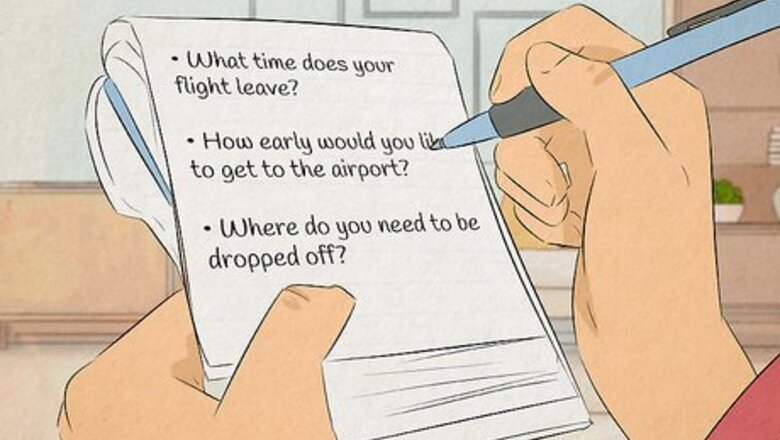
views
Plan questions ahead of time.
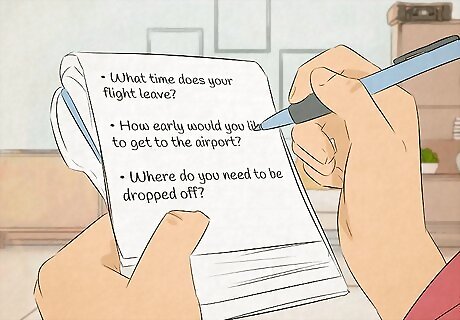
Jot down a few key points you want to cover so you stay on track. Take a few minutes to organize your thoughts and write down a few things you want to cover. That way, you can guide the conversation without pausing or thinking of what to say next. For example, if you’re taking a friend to the airport, some important questions you might ask include, “What time does your flight leave?” “How early would you like to get to the airport?” and “Where do you need to be dropped off?” As another example, if you’re going into an interview, you might ask, “What is the company culture like?” “Where do you see the company in 5 years?” and “What duties can I expect that aren’t in the job description?” When you’re actually talking to the person, it’s okay to follow the flow of the conversation into other topics, but always try to steer it back to the talking points you wrote down.
Tailor your questions to who you’re talking to.
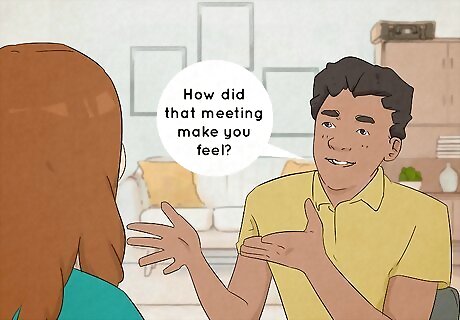
Ask questions relating back to the person to get a more personal answer. Vague questions can be a little overwhelming when people try to think of an answer. Choose a specific detail you know about the person to ask about instead. Since the question is targeted towards them, they’ll have an easier time answering honestly. For example, asking “How did that meeting make you feel?” can refer to anything that happened in the meeting. A better question would be something like, “How did you feel after presenting to the district manager during the meeting?” As another example, instead of asking, “What inspired your design?” you might try asking, “What inspired you to use the color blue throughout your work?”
Pose open-ended questions for more explanation.
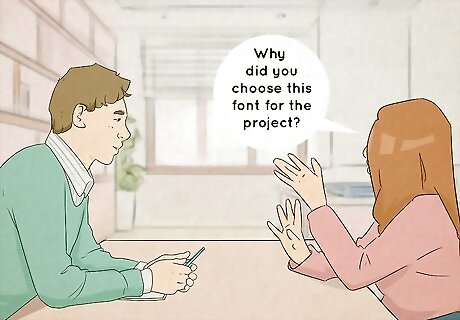
Open-ended questions require longer and more detailed answers. Use “what,” “how,” and “why” to start your questions so people can’t answer them with one-word answers. Since the person has to explain themselves more, their answers are more thorough and you’re less likely to make any judgments or assumptions from miscommunications. Some example open-ended questions include: “How did the budget changes affect your daily workload?” “Why did you choose this font for the project?” “What were the most memorable moments from the evening?”
Use direct questions to confirm info.

Direct questions require simple answers and work best for establishing facts. If you need a very decisive response, stick to questions that require a short, specific answer. Even though the other person won’t talk on the subject as much, it helps ensure you’re understanding the information correctly. Some direct questions you can try asking include: “Were you the lead designer on this project?” “When did you upload the files?” “Who were you with when the accident happened?”
Open with a broad question on the topic.
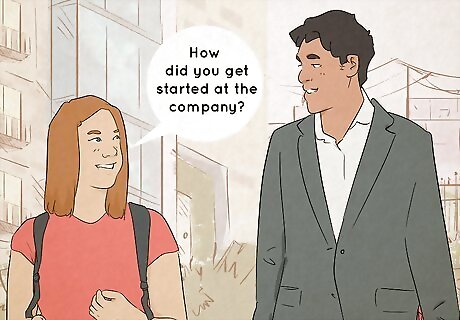
Starting with a general question sets the tone for the conversation. Rather than tackling a tough topic head-on, begin with some simple related questions to ease into the conversation. This makes everything less stressful at the start so you can build a repertoire with the other person and make them feel comfortable. For example, you may start with questions like, “How did you get started at the company?” or “What are you most excited to do today?”
Follow up with more specific questions.
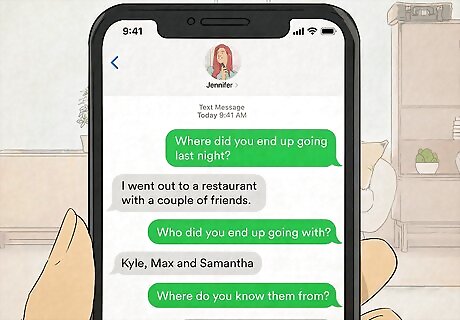
Try to learn something new with every question you ask. Listen carefully to how the other person responds and try to pick out key details they mention. Instead of asking another vague question on the topic, use funnel questioning to ask about a specific point from the previous answer. That way, you keep working toward the clearest and most honest answer. For example, if you’re asking about someone’s night, you might start with the question, “Where did you end up going last night?” If the person says they went out to a restaurant with friends, you might ask, “Who did you end up going with?” If they mention someone you don’t know, you could then ask, “Where do you know them from?” As another example, if you could start with, “How did you contribute to the project?” Once they answer, you might ask, “What was the biggest challenge you had?” After that, you could ask, “What did you do to overcome the challenge and complete your task?”
Build up to sensitive topics.
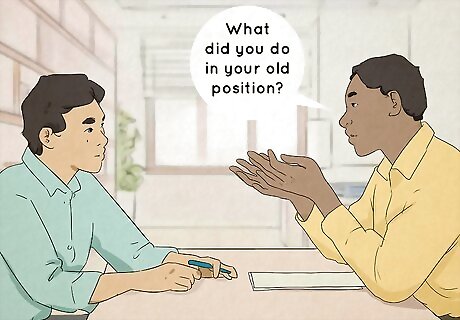
People might feel uncomfortable talking openly right away. Rather than jumping right into really personal or tough questions, ease the other person into the conversation first. Start out with some basic questions on the topic so you can get to know the person better and build a repertoire with them. Once the conversation flows easily, try peppering in a few tougher questions. For example, if you’re asking about why someone was let go from work, you might start with questions like, “How did you like your job?” or “What did you do in your old position?” After you talk for a little while, you can ask “What did your boss say when you were let go?” If the person still doesn’t feel comfortable talking about the subject, respect their privacy. Some studies have shown that some people are more likely to open up if you start with the tough questions so you can get them out of the way.
Seek clarification if you need it.
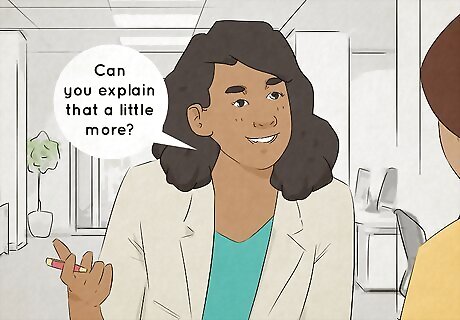
Ask the person to explain more if something doesn’t make sense. It’s okay if you don’t understand everything the person says right away, but mention that you need more details. You can say something like, “Can you explain that a little more?” or “What does that mean exactly?” so the person has a chance to fill you in on the information you’re missing. Try repeating back what the person told you to confirm that you’ve understood it. This is also a great way to show the other person you were listening and care about what they said.
Ask one thing at a time.
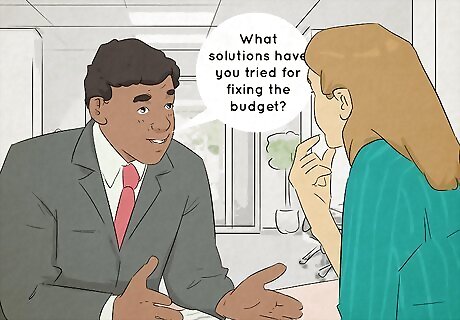
Too many questions at once could muddle the other person’s answer. Rather than stringing a bunch of questions together or asking something with a lot of layers, stick to one topic. Let the person answer completely before you ask them something else so they don’t get confused or miss an important point. For example, asking, “What can we do to resolve this budgeting issue and how will it affect our customers?” could lead to a lot of talking points and be confusing. Instead, you might try asking, “What solutions have you tried for fixing the budget?” followed by “How does this solution affect our customers?”
Use a casual tone.
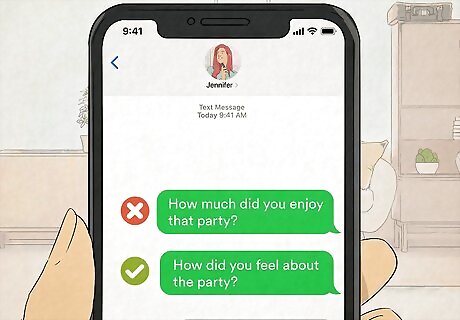
People are more willing to answer honestly if they feel comfortable with you. If you sound a little uptight, the other person may close themselves off and withhold information. Keep your voice relaxed and upbeat so you sound friendlier. Tell the person that you’re just having a conversation and that they can change their responses too so they aren’t pressured to give a perfect answer every time. For example, rather than asking, “What was the importance of adding that slide to the presentation?” you might instead ask, “What were you trying to cover on that last slide?” As another example, instead of asking, “What emotions were you feeling during the climax of the game?” you may ask, “How did you feel during the final seconds?” Use neutral language as well so you don’t sway their answer. For example, asking something like, “How much did you enjoy that party?” assumes the person already had fun. Try asking, “How did you feel about the party?”
Listen intently.

The person will open up when you show interest in them. When the other person is responding to you, let them answer completely without interruption. Make eye contact with them and turn your body toward them so you look open and receptive. Lean in closer and smile to help the person feel more comfortable. Try waiting a few seconds after they finish to speak up so you have more time to process what they said.



















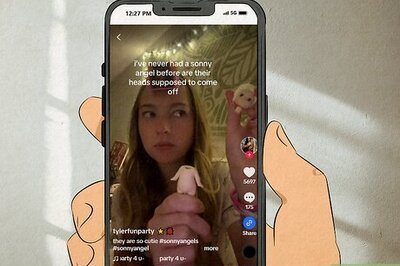
Comments
0 comment